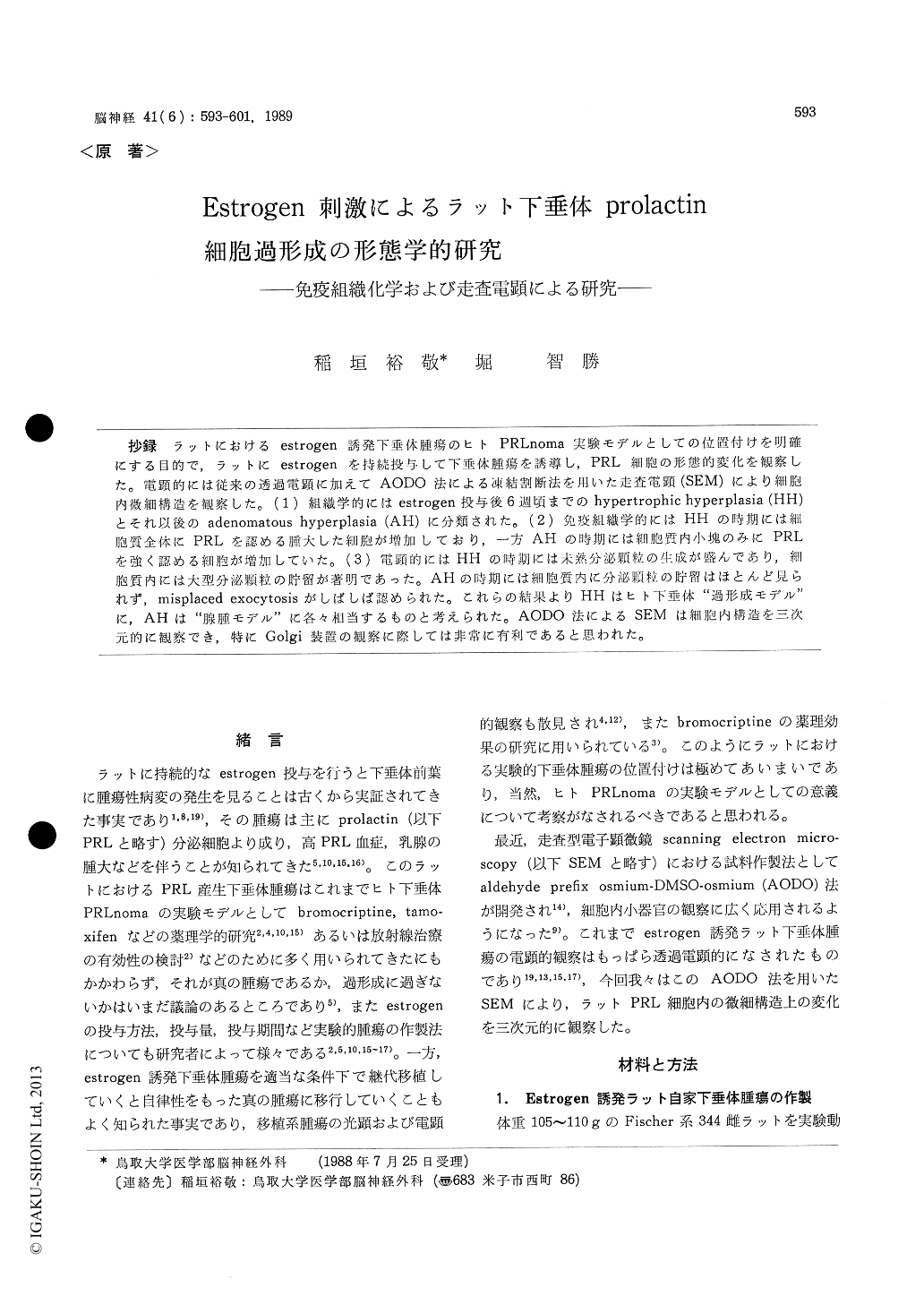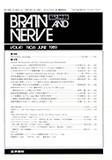Japanese
English
- 有料閲覧
- Abstract 文献概要
- 1ページ目 Look Inside
抄録 ラットにおけるestrogen誘発下垂体腫瘍のヒトPRLnoma実験モデルとしての位置付けを明確にする目的で,ラットにestrogenを持続投与して下垂体腫瘍を誘導し,PRL細胞の形態的変化を観察した。電顕的には従来の透過電顕に加えてAODO法による凍結割断法を用いた走査電(SEM)により細胞内微細構造を観察した。(1)組織学的にはestrogen投与後6週頃までのhypertrophic hyperplasia (HH)とそれ以後のadenomatous hyperplasia (AH)に分類された。(2)免疫組織学的にはHHの時期には細胞質全体にPRLを認める腫大した細胞が増加しており,一方AHの時期には細胞質内小塊のみにPRLを強く認める細胞が増加していた。(3)電顕的にはHHの時期には未熟分泌顆粒の生成が盛んであり,細胞質内には大型分泌顆粒の貯留が著明であった。AHの時期には細胞質内に分泌顆粒の貯留はほとんど見られず,misplaced exocytosisがしばしば認められた。これらの結果よりHHはヒト下垂体"過形成モデル"に,AHは"腺腫モデル"に各々相当するものと考えられた。AODO法によるSEMは細胞内構造を三次元的に観察でき,特にGolgi装置の観察に際しては非常に有利であると思われた。
It is well known that the tumorous lesion in rat anterior pituitary gland occurres after continuous administration of estrogen, which is mainly com-posed of PRL secreting cells. In this study the changes in rat PRL cells by estrogen treatment were studied histologically and immunocytoche-mically. Furthermore, intracellular structures inPRL cells were observed by high resolution scan-ning electron microscopy using the aldehyde prefix osmium-DMSO-osmium method. These rat pitui-tary tumors were established in Fischer-344 female rats by weekly injections of 2. 5 mg estradiol valerate. The estrogen-induced, autonomous and transplantable rat pituitary tumors (MtT/F 84) were also studied in the same manner and the findings were compared with estrogen-induced tumors. The increase of weight of pituitary gland and of serum PRL level correlated significantly with the number of estrogen administration.
On the basis of histological findings, estrogen-induced pituitary tumors can be classified into two different stages, that is, hypertrophic hyperplasia and adenomatous hyperplasia. The former corre-sponds to the period unitil 6 weeks after the be-ginning of estrogen treatment and the latter to the period thereafter. In the former, PRL cells were significantly increased in number and volume, and were diffusely immunoreactive for PRL in the cytoplasm. Cell atypism was rarely found. Theextent of acidphil staining was well preserved in hematoxilin-eosing staining. Ultrastructurally, organelles were well developed, especially rough endoplasmic reticulum showed whorl formation. Immature, irregularly shaped secretory granules were frequently observed within the Golgi area. Mature granules were richly stored at the peri-phery of the cell. The stage of adenomatous hyperplasia, on the other hand, was characterized by the obscurity of acinar pattern, the prominent cell atypism and mitosis, and the increased numbers of chromophobic cells. Electron microscopically, secretory granules were sparsely distributed in con-trasting to organelles which were more strongly developed. These findings in adenomatous hyper-plasia resembled to those of the MtT/F 84 tumor cell to some extent.
The implication of the study of estrogen-induced rat pituitary tumor as an experimental model for human PRLnoma was discussed.

Copyright © 1989, Igaku-Shoin Ltd. All rights reserved.


